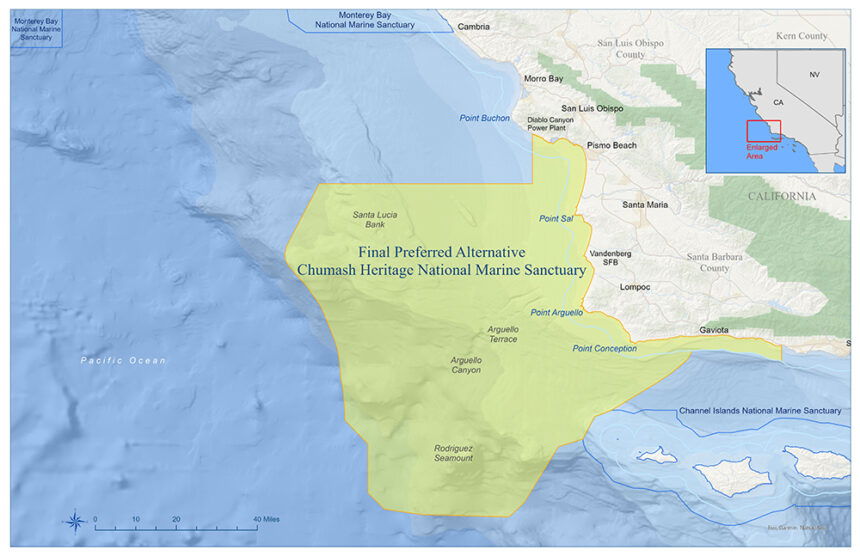Local tribal leaders celebrating major advancement in creation of Chumash Heritage National Marine Sanctuary

OCEANO, Calif. - Local Chumash tribal leaders are celebrating the long-proposed Chumash Heritage National Marine Sanctuary is now within just a few weeks from officially being created.
On Friday, the National Oceanic and Atmospheric Administration (NOAA) released its final environmental impact statement for designation of marine sanctuary, which would protect 116 miles of coastline from just south of Diablo Canyon Power Plant in San Luis Obispo County to the Gaviota Coast in Santa Barbara County.
"We're really excited," said Violet Sage Walker, Tribal Chair of the Northern Chumash Tribal Council, during an interview at the Oceano Dunes Monday morning. "It's the culmination of over a decade of work."
Under the NOAA's "Final Preferred Alternative", it would cover 4,543 square miles of coastal and ocean waters offshore of Central Coast, stretching out to nearly 60 miles from shore and down to a maximum depth of 11,580 feet.
"It's a special diversity of endangered species, really unique, phytoplankton combinations and, and water temperatures colliding in the Central Coast," said Gabriel Fausto, Chairman of the Coastal Band of the Chumash Nation. "It's extremely magical here. Our ancestors knew what it was because it's the furthest body of land out into the Pacific Ocean in the Western Hemisphere, so it's as far west as you can go on this continent. To us, it's a sacred place, as we're standing on the back side of Point Conception here, which is traditional and culturally significant to our tribe, Sacred Keepers of the Western gate. The Chumash people protected this place. They lived here and fellowshipped with the land as caretakers of the land. The Western Gate is deeply sacred to us. It's where the spirit leaves this physical dimension and goes off into the next, and so, our ancestors believed that all spirits traveled across the continent to the Western Gate to move on to the next world."
After Friday's release, the NOAA must wait 30 days after publication of the final environmental impact statement before making its decision, which is required by the National Environmental Policy Act.
The agency will release the final regulations and final management plan following the 30 days should NOAA decide to designate the new sanctuary.
